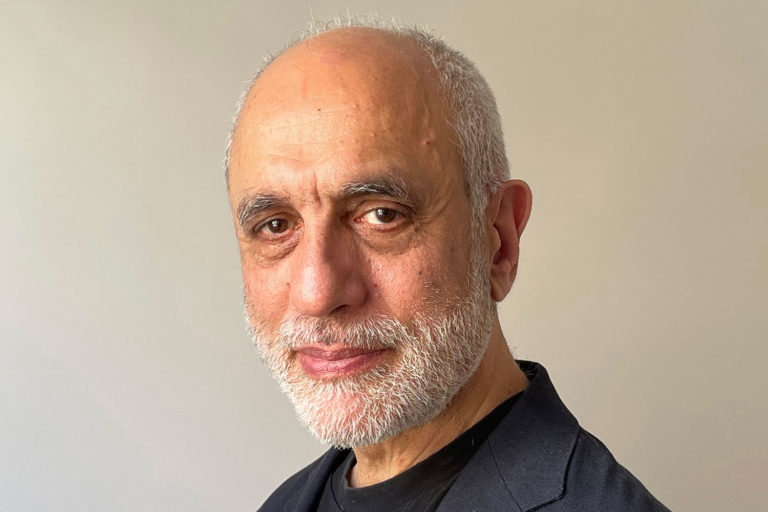The AIANY Honors Committee determines the recipients of the Chapter’s recognition programming, with the goals of increasing permanence, highlighting more clearly our most important values, and decoupling design excellence from the stereotypical conception of the individual architect.
In 2021, all awards previously named after individuals were renamed to more fully reflect these goals. Nevertheless, to honor the contributions of these past individuals, their names remain cited below to preserve their contributions to the profession.
See recent honorees here.
Honors and Awards Luncheon
Medal of Honor
The Medal of Honor is the Chapter’s highest honor that is conferred on an architect, or firm of architects, to recognize distinguished work and high professional standing.
Any architect who is a member of the Institute practicing within the territory of the Chapter is eligible for the Medal. An architect or firm of architects that has already received the Medal of Honor is ineligible for a future award.
Champion of Architecture Award Formerly Award of Merit
As defined in 11/12/69 Rules of the Executive Committee, this award is conferred on a non-professional for contributions as a client, public servant, critic or layman in any appropriate field related to the profession.
Architecture in Media Award Formerly Stephen A. Kliment Award
Originally named after Stephen A. Kliment, the Architecture in Media Award recognizes individuals who elevate and challenge the architectural discourse.
An architect who led Architectural Record in the financially turbulent 1990s, Kliment also served as the editorial director of the Chapter’s Oculus magazine and eOculus, the Chapter’s newsletter, beginning in 2002.
Kliment’s editorial focus centered largely on social justice and practical innovations. He was an honorary member of the National Organization of Minority Architects and a strong advocate for increasing the role of black architects in the profession.
New Perspectives Award
The New Perspectives Award celebrates individuals and/or collectives who, through their own recently published or curated work, take unique, critical positions that contribute to the broader understanding of architecture.
Annual Meeting
Leadership in Housing Award Formerly Andrew J. Thomas Award
Originally named after the late Andrew J. Thomas, the Leadership in Housing Award recognizes individuals or organizations who demonstrate a strong record of meaningfully advancing housing rights and equitable access for all New Yorkers.
Born in 1875 in Lower Manhattan and orphaned at the age of 13, Andrew Jackson Thomas was a self-taught architect with no formal training and a strong focus on housing. Thomas started his career in World War I designing housing for shipbuilders, and, following the 1918 pandemic, became a passionate advocate for garden apartments, designing projects that maximized light and air and kept construction costs low to increase affordability.
After noticing his work in Jackson Heights, John D. Rockefeller, Jr., hired Thomas to design the Dunbar Apartments, one of the first non-profit cooperatives for African Americans in Harlem, with notable occupants including, W. E. B. Du Bois, A. Philip Randolph, Paul Robeson, and Bill Robinson.
Public Architect Award
The Public Architect Award was initiated in 1984 to formally recognize and express appreciation for public architects who have made significant contributions while working within the public sector, either by producing exemplary architecture or urban design or by influencing an agency to produce public policy that results in exemplary architecture or urban design.
Service to the City Formerly George S. Lewis Award
Originally named after the late, former AIA New York Executive Director George S. Lewis, the Service to the City Award recognizes individuals or organizations who have made tangible design contributions, or participated in impactful collaborations with designers, to make New York City a better place to live.
Serving as Executive Director from 1969 to 1986, Lewis is most strongly remembered for activating the architectural community to engage in public debates that looked to improve the quality of city life, even when it came into conflict with the interests of individual members.
That meant taking positions against the1986 New York City Hall Park redesign, a project that did not entirely eliminate parking spaces, and advocating against plans for an office tower on the site of the Community House of St. Bartholomew’s Episcopal Church at Park Avenue and 50th Street.
The Chapter’s George Lewis Fund is meant to carry on his legacy by supporting programming that foster ideas to improve the quality of city life.
Service to the Institute Formerly Harry Rutkins Award
Originally named after the late Harry B. Rutkins, the Service to the Institute Award recognizes individuals for their significant service to the Chapter, Institute, and the profession.
As chair of the Legislative Committee for the Chapter and a member-at-large of the New York City Planning and Zoning Committee, Harry Rutkins dedicated much of his professional life to improving health and safety standards for all New York building occupants.
In 1937, Rutkins was convicted of second-degree manslaughter for the collapse of an apartment in the Bronx that killed 18 workers. After years of service to the Chapter and to the city to improve living and working conditions, the AIA exonerated him and reinstated his license to practice architecture.
Special Citation
The Special Citation is an intentionally elastic award given to individuals, organizations, or initiatives for leading work that addresses the unique challenges of the day. The AIANY Honors and Awards Committee, composed of AIA members, decides to award Special Citations at their discretion.
Board Inaugural
Vice Presidents' Citations
Awarded in three categories corresponding to each Vice President's jurisdiction—Design Excellence, Professional Development, and Public Outreach—the Vice Presidents' Citations are conferred on individuals, organizations, and/or programs whose contributions and services have enhanced the practice, understanding and profession of architecture, planning, and the built environment.








